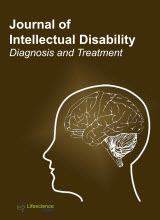jiddt
|
|
Abstract: The purpose of this study was to show that photographs have a psychological meaning, as people basically print and store the most significant photographs. And depending on the hierarchy of one's own values, a person will store the corresponding photos. People choose those photographs where there are especially significant events or especially significant people. Therefore, in this way the psychological meaning is imposed on the photo. Learning person's way of life in psychology can reveal psychological implementations, which are connecting personality with its necessities, values, and world views in general. And these psychological implications can be found in photographs of special personal importance. The most precious photos people have been keeping throughout their lives can be psychologically meaningful according to their values. This article details the experimental methods provided by the quality analysis. Since we are pre-limited by 10 pictures, we already have a psychological sense of them. The hierarchy of the selected pictures and the individual differences between the people also take an important place within the study. Keywords: Personality’s life course, photography, 10 photos, psychological method, value.
|
|
|
Abstract: The objective of this study was to find out the level of emotional intelligence of preschool teachers-methodologists with the purpose of further professional advancement (enhancing their emotional competence). Tools applied for collecting and processing statistics were the following: survey results, methodologist’s checklists of observation of conducting classes by the teacher, N. Hall’s Emotional Intelligence Test, questionnaires for parents. There was also a survey of training participants followed by written feedback. STATA software was used for data processing, and the online TextAnalyzer utility was used to process free responses from the parent questionnaires. It is found that the system of formation of emotional intelligence, based on the training we have developed, has a positive impact on the development of emotional intelligence of preschool teachers-methodologists. The above approach enhances the knowledge of preschool teachers about their emotions, senses and feelings, contributing to the development of their ability to understand their own emotions. After the training, 7.14% of the participants showed a low level as opposed to the initial level of 33.33%. The medium level rose significantly, from 60.0% to 78.6%. And the high level of awareness of emotional intelligence in teachers has increased more than twice - from 6.67% to 14.29%. The arithmetical mean for raw scores also increased - from 43.87 to 57.54, thus confirming that the system used in training allows developing strategies for modulation of their emotions, introducing the training participants to the techniques of expression of their emotions and developing a range of emotional competency skills aimed at overcoming emotive situations. Since during the analysis of the lessons by the methodologist the teacher had to respect both the positive and negative response of the methodologist and since respect is a component of leadership, we can say that the feedback contributed to the development of leadership qualities of teachers. Regarding pedagogical skills, provided that the teacher constantly works on self-improvement of emotional intelligence, we state that the level of the teacher’s pedagogical skills also improves. We consider it reasonable to further explore the possibilities of developing the competence of emotional intelligence in future teachers during their study in higher educational institutions and preschool teachers. Keywords: Emotional intelligence, teachers-methodologists, emotional awareness, modulation of emotions, self-motivation.
|
|
|
Abstract: Objective: Post-dural-puncture headache (PDPH) is the most common side effect associated with a lumbar puncture (LP). The present study aims to evaluate the effect of midazolam on the prevention of PDPH. Keywords: Lumbar puncture, Headache, Midazolam.
|
|
|
Abstract: The article deals with the organization of career guidance for individuals with special educational needs in the Republic of Kazakhstan. This paper considers the professional orientation of young people with disabilities based on the theoretical analysis of the current state of career guidance organization. The authors pay special attention to the problem of effective career guidance activities, which largely depend on the comprehensive and consistent nature of these activities and involve all the aspects of the educational process. Keywords: Career guidance, vocational education, employment, youth with special educational needs.
|
|
|
Abstract: Background and Objective: Although current evidence has demonstrated the efficacy and immunity of Alteplase, further studies are needed to evaluate its functioning in the therapeutic system. This study aims to assess the effect and immunity of tissue plasminogen activator (tPA) in the treatment of acute ischemic stroke (AIS). Keywords: Acute ischemic stroke, Thrombolytic therapy, NIHSS, mRS.
|


